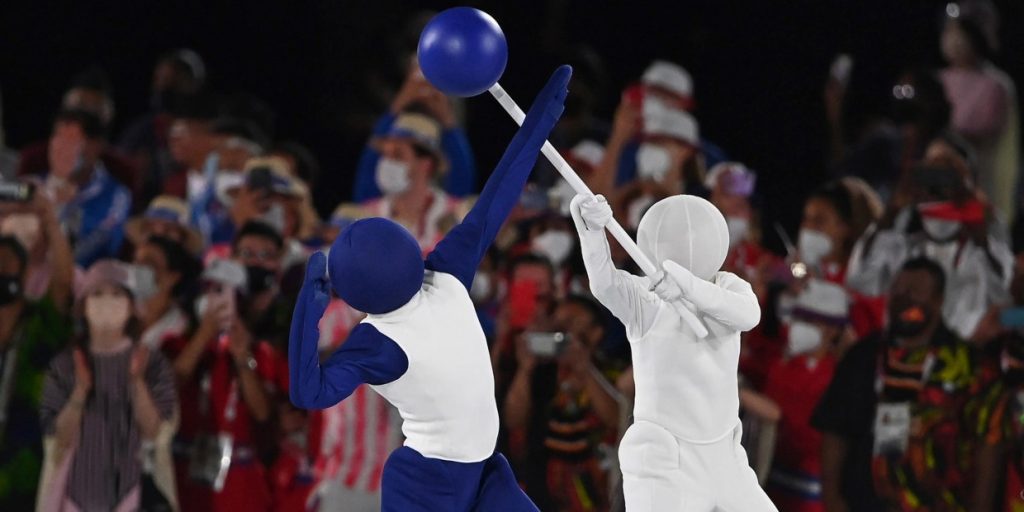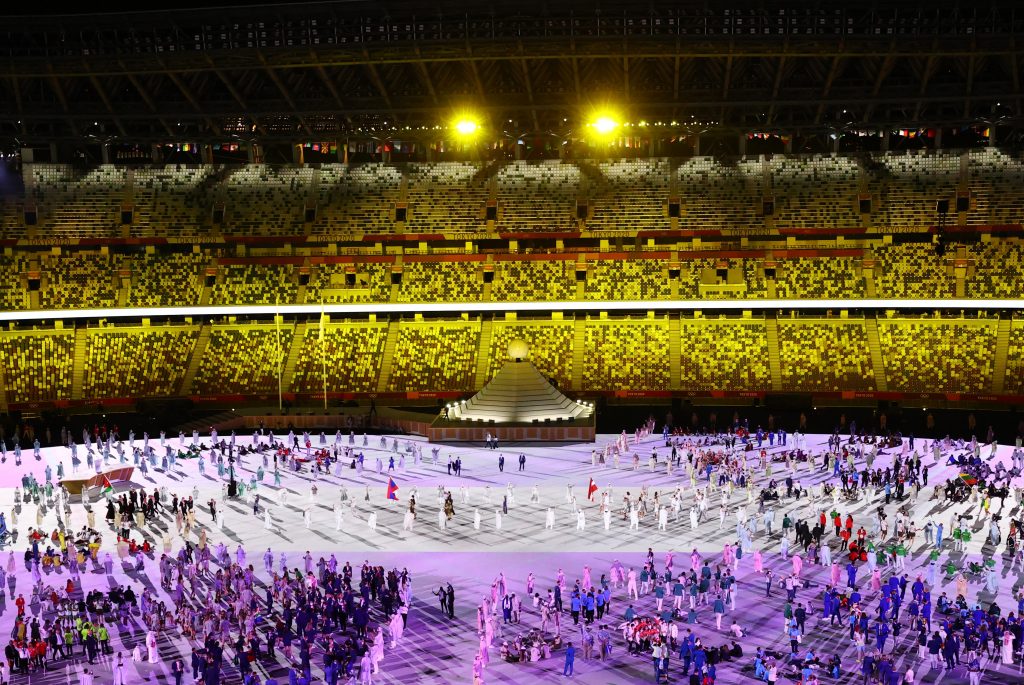The opening ceremony of the Tokyo 2020 Olympics, just like its predecessors, gave out numerous symbolic traditions. It offered spectacles and performances that proved, once again, that Japan is in a league of its own – hands down on their Pictograms performance.
Like religion, the Olympic Games have rituals and customs followed and conducted in a specific manner, all to honor the origin of the Olympiad. However, the opening of the 2020 Summer Olympics offered way more than a homage to its history. With the COVID-19 pandemic still causing fear and uncertainty, the ceremony managed to send a loud and clear message – unity across nations is strong enough to make things possible.
Olympic rings

The five rings in the Olympic flag “represent the union of the five continents and the meeting of athletes from throughout the world at the Olympic Games.” If you are wondering why only five when there are seven continents in the world, that is because both North and South America are under the Americas, representing the red ring. Europe takes the blue ring, black for Africa, yellow for Asia, and green for Australia and Oceania.
Pictograms

Do you ever wonder why the Olympic Pictograms look very familiar? That is likely because the country that designed those is the same country that created the pictograms of one of the most common places we have all visited – men’s and women’s restrooms.
However, some Olympic historians say that the art of creating images to interpret games dates way before Japan did in 1964. But it was Japan that started the philosophy of developing comprehensive and easily understandable symbols.
If you watched the opening ceremony, a portion of the program was the unveiling of the new version of Pictograms. Three figures are seen in a studio set up; photos are taken, and then they get mixed before translating the action digitally. It’s the very same process Japan did in 1964, combining sports photography and topographic unity to create a graphic illustration of a sport. So yes, that quirky and fun performance was the history of the creation of the Olympic Games Pictograms by Japan.
Olympic flames and the Olympic Torch Relay

Now, these are topics that deserve their own articles. But let’s give it a rundown here. Fire is the symbol of life and freedom. The Olympic flames symbolize the fire Prometheus stole from Zeus in Greek mythology, which he then passed on to humanity as a gift. While the tradition of lighting a flame started in Athens, Greece, it was only in 1928 when it became a part of the Olympic Games, without the torch relay.

The tradition of passing the torch hand by hand started in Berlin, back in 1936, when they hosted the Olympics under Hitler’s Nazi regime. Historians said that it was to showcase Germany’s growing power and promote Hitler’s theories of Aryan racial superiority, evidenced by the last torchbearer who has Aryan features.

Back then, the flame would travel from Olympia, Greece. One country would pass the flames to another until it reaches the Olympic Stadium’s location where the Olympic cauldron is. The shortest relay happened in 1976 when Canada took the hosting job for the Olympics. It only took five days for the flame to be transferred. It was also the first time that a man and a woman carried the torch together to the Olympic Stadium.
Continued Tradition

Following the postponement of the Tokyo Olympics due to the COVID-19 pandemic, the committee decided to send the flame via plane on March 20, 2020. It then waited there until the relay officially started on March 26, 2021. Taking 121 days before reaching the Olympic Stadium – it became the longest torch relay in history, unofficially.

The Olympic Games are not just a celebration of talents and skills. It is, from its deep roots, a symbol of unity and friendship across nations. The Tokyo 2020 Olympics emulated that symbolism throughout the Olympic Stadium. One of the most iconic moments was the honoring of the frontliners, healthcare workers, and victims of calamities. They were led to carry the Olympic flag and join the torch relay. It was a display of humanity we consistently wish to see in these trying times. The very reason we celebrate the Olympic Games globally.

